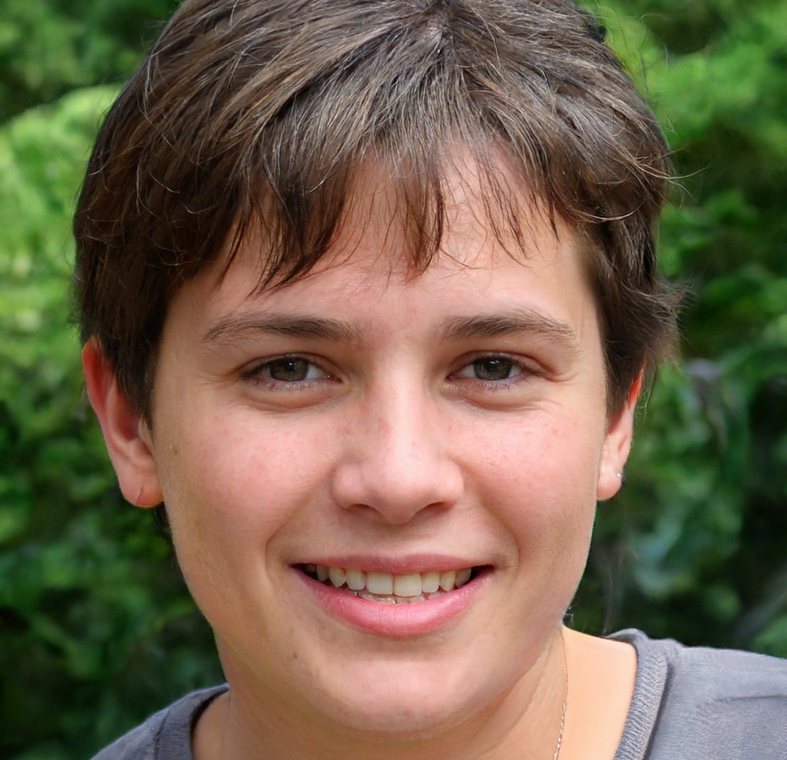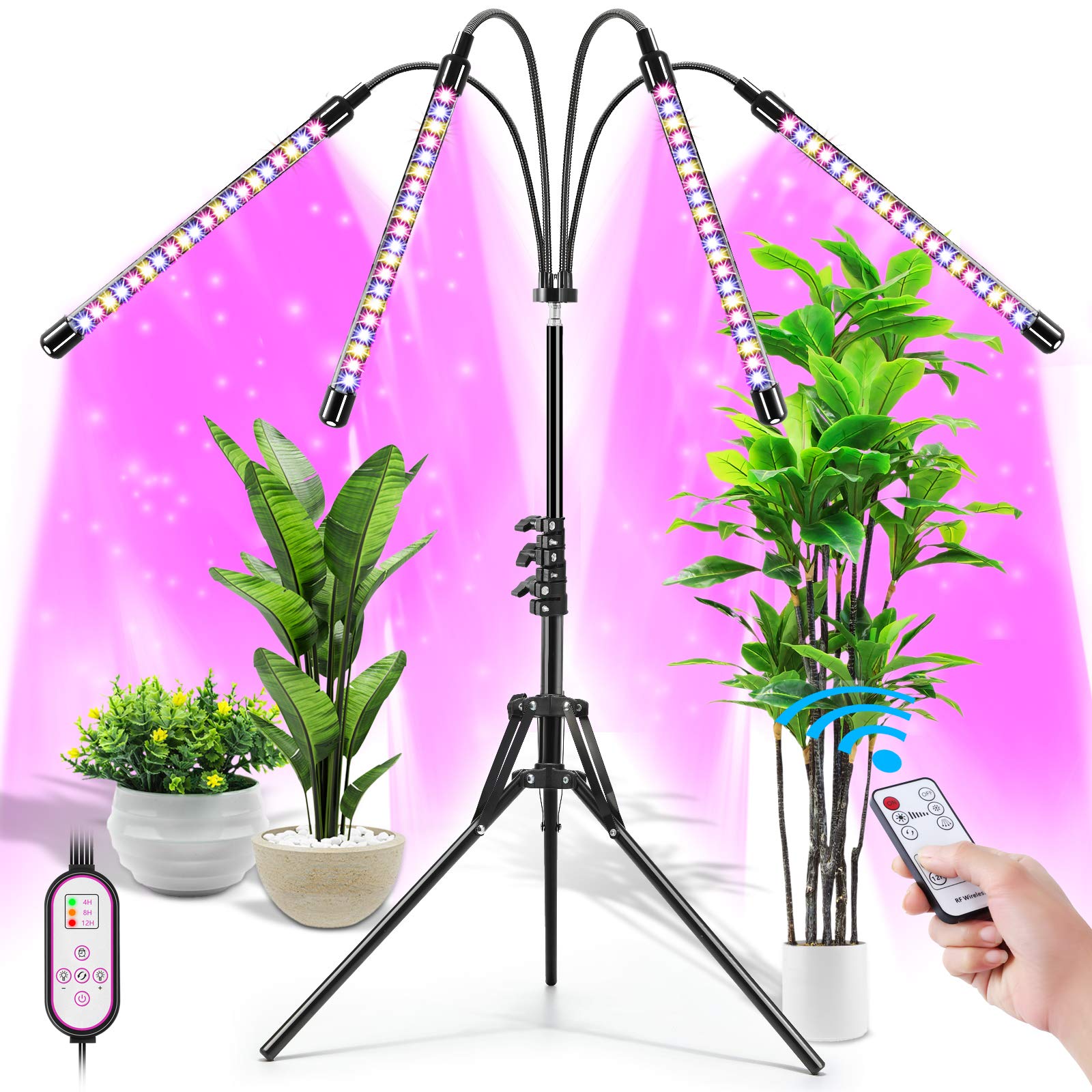Calculate Grow Light Requirements
PPFD Requirements Guide
📊 PPFD (Photosynthetic Photon Flux Density) measures light intensity in μmol/m²/s. Higher PPFD = more photosynthesis = better growth (up to plant’s saturation point).
🌱 Seedlings & Clones
PPFD Range: 200-400 μmol/m²/s
- Optimal: 250-350 PPFD
- Duration: 18-24 hours/day
- DLI: 15-25 mol/m²/day
- Why lower? Young plants can’t handle intense light
- Signs of too much: Bleaching, burning, stunting
🌿 Vegetative Growth
PPFD Range: 400-600 μmol/m²/s
- Optimal: 500-550 PPFD
- Duration: 18 hours/day
- DLI: 30-40 mol/m²/day
- Goal: Strong stems, healthy foliage
- Blue spectrum: Promotes compact growth
🌺 Flowering & Fruiting
PPFD Range: 600-1000 μmol/m²/s
- Optimal: 700-900 PPFD
- Duration: 12 hours/day
- DLI: 35-50 mol/m²/day
- Goal: Maximum yields, dense flowers/fruit
- Red spectrum: Promotes flowering
📏 Measuring PPFD
How to measure light intensity:
- PAR meter: Accurate ($150-500)
- Manufacturer data: Check PPFD maps
- Smartphone apps: Rough estimates (±30%)
- Measure at canopy: Plant height level
- Multiple points: Check edges & center
- Adjust height: Higher = lower PPFD
☀️ DLI (Daily Light Integral)
Total light per day:
DLI = PPFD × Photoperiod (hours) × 0.0036
- Low light plants: 5-10 mol/m²/day
- Medium light: 10-20 mol/m²/day
- High light: 20-30 mol/m²/day
- Cannabis flowering: 35-50 mol/m²/day
- Maximum useful: ~60 mol/m²/day
⚠️ Light Stress Signs
Too much light:
- Leaf bleaching (white/yellow tops)
- Leaf curling upward (“taco” leaves)
- Stunted growth
- Brown/crispy tips
Too little light:
- Stretching (long internodes)
- Pale green color
- Slow growth
- Thin, weak stems
Grow Light Technology Comparison
💡 LED Grow Lights
Wattage: 30-40W per sq ft
- Efficiency: 2.5-3.0 μmol/J (best)
- Lifespan: 50,000+ hours
- Heat output: Low
- Spectrum: Full spectrum available
- Cost: High upfront, low operating
- Best for: All stages, energy efficiency
Example: 4×4 tent = 480-640W LED
🔆 HPS (High Pressure Sodium)
Wattage: 50-65W per sq ft
- Efficiency: 1.4-1.7 μmol/J
- Lifespan: 10,000-24,000 hours
- Heat output: Very high
- Spectrum: Red-heavy (flowering)
- Cost: Low upfront, high operating
- Best for: Flowering stage, proven results
Example: 4×4 tent = 600-1000W HPS
⚡ CMH/LEC (Ceramic Metal Halide)
Wattage: 35-45W per sq ft
- Efficiency: 1.8-2.0 μmol/J
- Lifespan: 20,000 hours
- Heat output: Moderate-high
- Spectrum: Closest to sunlight
- Cost: Moderate
- Best for: Full spectrum needs
Example: 4×4 tent = 315-630W CMH
💵 Cost Comparison
4×4 grow space (16 sq ft) example:
- LED (560W): $250-600 upfront
- HPS (800W): $100-250 upfront
- CMH (630W): $200-400 upfront
Annual electricity (18hr/day veg + 12hr/day flower):
- LED: $300-400/year
- HPS: $500-700/year
- CMH: $400-550/year
LED pays for itself in 1-2 years through energy savings!
🌡️ Heat Management
Heat output by technology:
- LED: 50-60% heat (coolest)
- CMH: 60-70% heat
- HPS: 80-90% heat (hottest)
Cooling requirements:
- LED: Minimal AC, good airflow OK
- CMH: Moderate AC, exhaust fan needed
- HPS: Heavy AC, air-cooled hoods essential
🎯 Recommendation
Choose based on your needs:
- Best overall: LED (efficiency, longevity)
- Budget choice: HPS (proven, cheap upfront)
- Spectrum quality: CMH (sunlike spectrum)
- Small spaces: LED (low heat)
- Large commercial: LED or HPS
- Climate: Cold = HPS heat helps; Hot = LED
Complete Grow Light Guide
📐 Coverage Area Basics
How lights cover space:
- Center hotspot: Highest PPFD directly under light
- Edge falloff: 30-50% lower PPFD at edges
- Height matters: Higher = more coverage, lower PPFD
- Overlap: Multiple lights for even coverage
Hanging height guide:
- Seedlings: 24-36″ (lower PPFD)
- Vegetative: 18-24″ (moderate PPFD)
- Flowering: 12-18″ (high PPFD)
- Adjust by plant response!
🔌 Wattage Guidelines
Watts per sq ft by technology:
- LED: 30-40W/sq ft (25W minimum, 50W max)
- HPS: 50-65W/sq ft (40W minimum, 75W max)
- CMH: 35-45W/sq ft (30W minimum, 55W max)
- Fluorescent: 30-40W/sq ft (seedlings only)
Common grow space sizes:
- 2×2 (4 sq ft): 120-160W LED
- 3×3 (9 sq ft): 270-360W LED
- 4×4 (16 sq ft): 480-640W LED
- 5×5 (25 sq ft): 750-1000W LED
🌈 Light Spectrum
Different colors = different effects:
- Blue (400-500nm): Vegetative growth, compact plants
- Green (500-600nm): Penetrates canopy depth
- Red (600-700nm): Flowering, fruiting, yields
- Far-red (700-750nm): Stretch, flowering trigger
- UV (< 400nm): Resin/terpene production
Ideal spectrum mix:
- Veg: 40% blue, 40% red, 20% green/other
- Flower: 20% blue, 60% red, 20% green/other
⏰ Light Schedule (Photoperiod)
Hours of light per day:
- Seedlings: 18-24 hours (24hr OK for first week)
- Vegetative: 18/6 (18 on, 6 off) standard
- Flowering: 12/12 (triggers flowering)
- Autoflowers: 18-20 hours entire lifecycle
Alternative schedules:
- 20/4: More growth, higher cost
- 6/2 (Gas Lantern): 12-5.5-1-5.5 (veg maintenance)
💰 Operating Costs
Electricity calculation:
Cost = (Watts ÷ 1000) × Hours/day × Days × Rate
Example (500W LED, $0.12/kWh):
- Veg (18hr/day, 60 days): 0.5 × 18 × 60 × $0.12 = $64.80
- Flower (12hr/day, 60 days): 0.5 × 12 × 60 × $0.12 = $43.20
- Full cycle: $108 total
Annual cost (2 cycles/year): ~$216
🌡️ Temperature Control
Ideal grow room temps:
- Lights on: 75-85°F (24-29°C)
- Lights off: 65-75°F (18-24°C)
- Seedlings: 70-75°F (warmer)
- Humidity: 40-60% (varies by stage)
Managing heat:
- Exhaust fans (match tent CFM)
- AC units for large spaces
- Air-cooled hoods (HPS/CMH)
- LED upgrade (50% less heat)
🔍 Common Mistakes
Avoid these errors:
- Underpowered lights: Stretching, poor yields
- Too close: Light burn, bleaching
- Too far: Stretching, weak growth
- Wrong spectrum: Vegetative in flower spectrum
- Ignoring PPFD: Watts alone don’t tell the story
- No light meter: Guessing intensity
- Poor coverage: Hotspots and dead zones
🛠️ Setup Checklist
Essential equipment:
- Grow lights: Sized for your space
- Timer: Automate schedule
- Hangers/ratchets: Adjust height easily
- PAR meter: Measure PPFD ($150-500)
- Exhaust fan: Heat & humidity control
- Thermometer/hygrometer: Monitor conditions
- Surge protector: Protect equipment
What this calculator does
- Estimates total wattage needed for your grow space by light technology (LED, HPS/MH, CMH, Fluorescent).
- Sets target PPFD and DLI by growth stage so you don’t guess light intensity.
- Estimates plant capacity by method (SOG, SCROG, traditional, large plants).
- Projects daily, cycle, and annual electricity costs based on your rate.
Quick start
- Choose growth stage: Seedlings, Vegetative, or Flowering to auto-fill a realistic PPFD target and daily hours.
- Enter grow space length and width in feet to define actual canopy footprint (not whole room).
- Pick light technology (LED, HPS/MH, CMH, Fluorescent) to size wattage per square foot correctly.
- Set your electricity rate ($/kWh); 0.12 is a common default if unknown.
- Click Calculate to see watts needed, PPFD/DLI targets, plant capacity, costs, and setup tips.
Input fields explained
- Plant Growth Stage:
- Seedlings/Clones: Target PPFD ≈ 300; 18–24 h photoperiod; gentle intensity.
- Vegetative: Target PPFD ≈ 500; 18 h photoperiod; strong growth.
- Flowering/Fruiting: Target PPFD ≈ 800; 12 h photoperiod; high intensity for yield.
- Grow Space Length/Width (ft): Measure the canopy footprint your plants actually occupy, not the entire room.
- Light Technology:
- LED: 30–40 W/sq ft (efficient, coolest).
- HPS/MH: 50–65 W/sq ft (powerful, hottest).
- CMH/LEC: 35–45 W/sq ft (balanced spectrum/heat).
- Fluorescent: 30–40 W/sq ft (best for seedlings/clones).
- Electricity Rate ($/kWh): Billing rate from your utility (e.g., $0.12).
Output metrics
- Total Watts: The total fixture wattage recommended for your canopy (by tech).
- Coverage Area (sq ft): Length × Width you entered.
- Target PPFD (μmol/m²/s): Intensity goal at canopy for your stage.
- Plant Capacity: Range of plants by method (SOG up to 4/sq ft; SCROG ≈ 2/sq ft; traditional ≈ 1/sq ft; large plants ≈ 1 per 4 sq ft).
- DLI (mol/m²/day): Daily light total; the calculator reports a typical value for the chosen stage and photoperiod.
- Operating Costs: Daily cost for your current stage hours, plus typical 60-day veg and 60-day flower cost and an annual (2-cycle) estimate.
Using the results for planning
- Wattage to fixture mapping:
- LED: Prefer multiple panels to even out hotspots and edge falloff; e.g., two 300W over a 4×4 instead of one 600W.
- HPS: 400W for smaller tents, 600–1000W for 4×4; use air-cooled reflectors and strong exhaust.
- CMH: 315W modules scale cleanly; two 315W units cover a 4×4 well.
- Hanging height starting points:
- Seedlings: 24–36 in (LED), 30–40 in (HPS/CMH).
- Vegetative: 18–24 in (LED), 24–30 in (HPS/CMH).
- Flowering: 12–18 in (LED), 18–24 in (HPS/CMH).
- Photoperiod guide:
- Seedlings/Clones: 18–24 h (24 h fine first week).
- Vegetative: 18/6 standard (or 20/4 for faster veg, higher cost).
- Flowering: 12/12 to induce blooms.
- Autoflowers: 18–20 h through the whole lifecycle.
Reading PPFD and DLI
- PPFD is instantaneous intensity; DLI is daily light total.
- Typical targets:
- Seedlings/Clones: 200–400 PPFD; DLI ~15–25.
- Vegetative: 400–600 PPFD; DLI ~30–40.
- Flowering/Fruiting: 600–1000 PPFD; DLI ~35–50 (CO₂ supplementation allows the upper end).
- If you have a PAR meter: measure at multiple canopy points (center and corners) and adjust hanging height or add fixtures to improve uniformity.
Cost estimation and budgeting
- Cost formula: kW × hours/day × days × $/kWh.
- The calculator shows:
- Daily cost for your stage hours.
- Typical Veg (60 days at 18 h/day) and Flower (60 days at 12 h/day).
- Annual cost for two full cycles.
- LED usually pays for itself within 1–2 years in electricity and cooling savings versus HPS in the same footprint.
Spectrum tips
- Vegetative growth responds well to more blue; flowering/fruiting responds to more red.
- Full-spectrum LEDs simplify management across stages; dimming is ideal for dialing intensity by phase.
Troubleshooting with the calculator
- Plants stretching, pale, slow growth: Increase intensity (lower fixture slightly or add watts).
- Bleaching, taco leaves, crispy tips: Decrease intensity (raise fixture or dim).
- Hotspots/uneven canopy: Add a second smaller light, raise and dim, or spread fixtures to overlap footprints.
- High bills/overheating: Switch to LED, reduce photoperiod (if biologically acceptable), improve ventilation, or run lights at night.
Best practices checklist
- Calibrate expectations by stage: don’t run flowering PPFD on seedlings.
- Size to canopy footprint—not entire room—for accuracy.
- Prioritize uniformity: two smaller fixtures often outperform one large unit for even PPFD.
- Track PPFD/DLI at canopy height; adjust when plant height changes.
- Keep a margin for summer heat; HPS/CMH often need aggressive exhaust or AC.
Example walkthroughs
- 4×4 (16 sq ft) LED flowering:
- Target: 800 PPFD, 12 h/day.
- Wattage: ~560 W LED (35 W/sq ft).
- Plant capacity: 16 traditional, ~32 SCROG, ~64 SOG; large plants ~4.
- Annual (2 cycles): The calculator will display cost using your rate.
- 3×3 (9 sq ft) vegetative with CMH:
- Target: 500 PPFD, 18 h/day.
- Wattage: ~360 W CMH (40 W/sq ft) → one 315W CMH is a good practical match.
- Plant capacity: 9 traditional, ~18 SCROG, ~36 SOG.
Safety and setup
- Use proper-rated timers, surge protection, and secure ratchet hangers.
- Maintain safe clearances; avoid direct contact with leaves.
- Ensure adequate ventilation; pair CFM to tent volume and heat load.
- Keep drivers/ballasts cool and off the floor; prevent water exposure.

Angelina Everly leads the editorial desk at Live Green Gardens, blending practical plant care, hands-on product testing, and approachable outdoor styling. She focuses on step-by-step how-tos, buyer’s guides, and small-space makeovers that work in real life and real budgets. When she’s not comparing pruning shears or setting up a drip kit, you’ll find her creating cozy corners with planters, solar lights, and pollinator-friendly picks—always with clear pros/cons and safety notes so you can buy once and garden happy.

